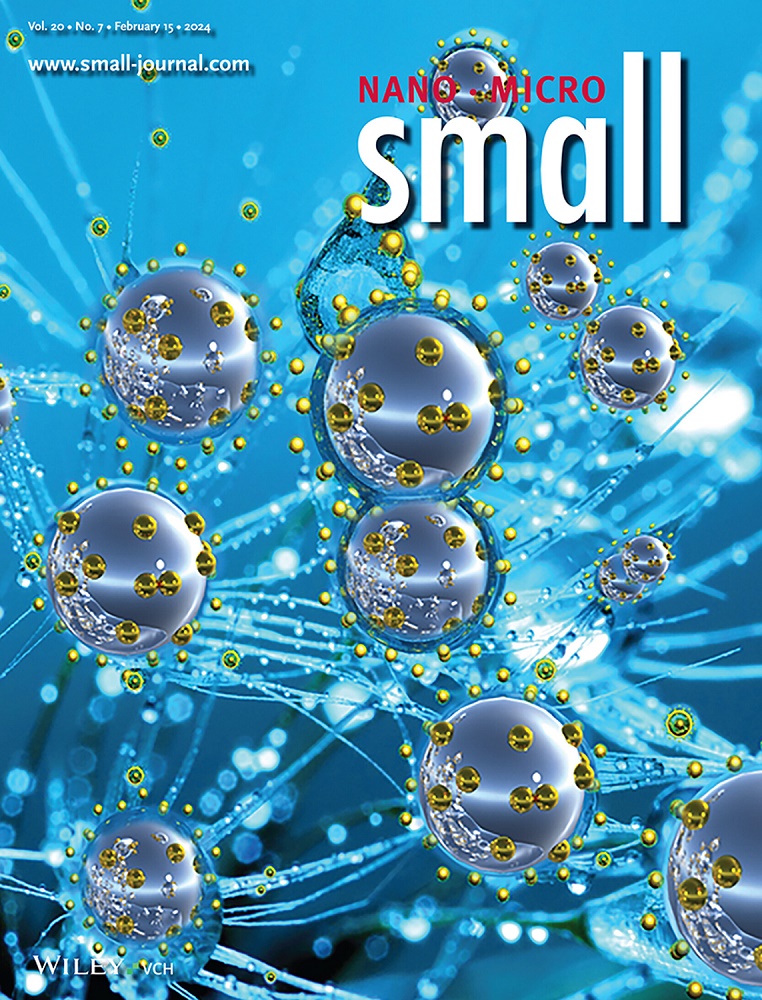Mg‐MOF‐74@PAN Nanofibrous Membranes: Synergistic Purification of Trace Formaldehyde and Particulate Matter
IF 13
2区 材料科学
Q1 CHEMISTRY, MULTIDISCIPLINARY
引用次数: 0
Abstract
The rapid removal of trace formaldehyde and particulate matter (PM) from indoor environments via adsorption and filtration remains a significant challenge. Herein, a series of MOFs@PAN composite membranes with dense adsorption sites and enhanced electrostatic interactions are engineered for efficient formaldehyde capture and PM filtration. The 72%‐Mg‐MOF‐74@PAN membrane demonstrated a remarkable HCHO adsorption capacity of 36.39 mg gMg‐MOF‐74@PAN纳米纤维膜:微量甲醛和颗粒物的协同净化
通过吸附和过滤快速去除室内环境中的微量甲醛和颗粒物(PM)仍然是一个重大挑战。本文设计了一系列具有密集吸附位点和增强静电相互作用的MOFs@PAN复合膜,用于有效捕获甲醛和PM过滤。72%‐Mg‐MOF‐74@PAN膜对HCHO的吸附量为36.39 Mg g−1 (1 ppm, 303 K),突破吸附量为106.11 Mg g−1 (10 ppm, 298 K),超过了商用活性炭(1.23 Mg g−1)和ZIF‐67@ANF (MOF, 5.31 Mg g−1)。优异的微量HCHO吸附源于不饱和Mg簇与HCHO之间的强静电相互作用,以及框架内密集分布的吸附位点。此外,72%‐Mg‐MOF‐74@PAN膜对PM0.3的颗粒过滤效率超过99.5%。PM0.3捕获机制协同集成了由超细PAN纤维(0.25µm)介导的被动结构扩散沉积和由表面羟基和不饱和金属位点驱动的主动静电捕获。这项研究强调了Mg - MOF - 74@PAN膜在改善室内空气质量,有效去除甲醛和过滤PM0.3颗粒方面的卓越性能。
本文章由计算机程序翻译,如有差异,请以英文原文为准。
求助全文
约1分钟内获得全文
求助全文
来源期刊

Small
工程技术-材料科学:综合
CiteScore
17.70
自引率
3.80%
发文量
1830
审稿时长
2.1 months
期刊介绍:
Small serves as an exceptional platform for both experimental and theoretical studies in fundamental and applied interdisciplinary research at the nano- and microscale. The journal offers a compelling mix of peer-reviewed Research Articles, Reviews, Perspectives, and Comments.
With a remarkable 2022 Journal Impact Factor of 13.3 (Journal Citation Reports from Clarivate Analytics, 2023), Small remains among the top multidisciplinary journals, covering a wide range of topics at the interface of materials science, chemistry, physics, engineering, medicine, and biology.
Small's readership includes biochemists, biologists, biomedical scientists, chemists, engineers, information technologists, materials scientists, physicists, and theoreticians alike.
 求助内容:
求助内容: 应助结果提醒方式:
应助结果提醒方式:


